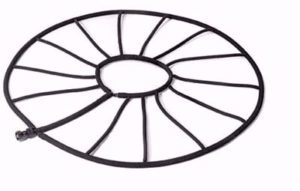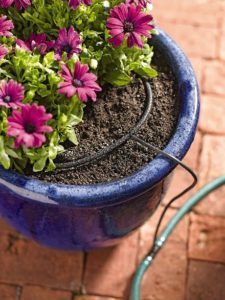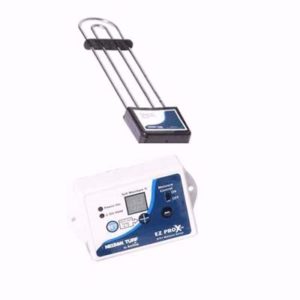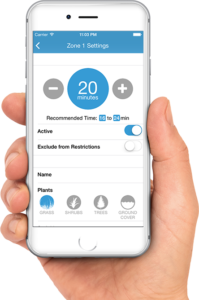Tip of the Month – Seven Ways to Conserve Water Outdoors
U.S. homeowners use 30 percent of their water outdoors, much of it on lawns and gardens. The EPA estimates residential landscape irrigation totals nearly 9 billion gallons per day, and nearly half that amount goes down the drain due to over-watering, evaporation, or poor equipment. Here are seven ways to reduce that drain and ensure your yard and flower beds look great. Not only will you conserve water, but you’ll save time and money too.
Opt for Drip Irrigation:
Deliver moisture straight to thirsty roots, minimizing evaporation. There are a variety of drip systems specifically designed for trees, flowers and shrubs, and planters. Many have a timer that attaches to your spigot for hassle-free watering.
Check for Leaks in Pipes, Hoses, Faucets and Couplings:
Leaks outside the house may not seem as bad since they’re not as visible. But they can be just as wasteful as leaks indoors. Check frequently to keep them from trickling. Use hose washers at spigots and hose connections to eliminate leaks.
Monitor your Water Usage:
Install a water monitoring device between the hose and the sprinkler and you’ll know how many gallons of water is used during a watering session. It may just inspire you to cut down your water usage.

Capture Rain in a Decorative Rain Barrel:
Rain barrels are containers designed to trap and store water, by catching rainwater swirling along roof gutters and out of downspouts. Rain barrels with a drainage valve store water for use between rain events, and allow you to easily empty the water slowly and direct the flow. Some states offer monetary incentives for rainwater harvesting, while other states do not allow rain barrel usage, so check your local laws first.
Install a Soil Moisture, Rain, Wind, or Wi-Fi Weather Sensor:
A soil moisture sensor displays the moisture content in the soil so you know when water’s needed—and when it’s not. Some systems use the water content information to automatically either allow or bypass scheduled irrigation cycles.
A rain sensor automatically shuts off your sprinkler system when it rains, so you don’t have to worry when you’re home or away. When a certain amount of rainfall is detected, a signal is transmitted to interrupt regularly scheduled irrigation sessions.
A wind sensor adjusts your irrigation program in response to real-time evapotranspiration data (such as wind velocity, rainfall, and humidity levels) gathered in your yard.
The most advanced technology uses weather data to optimize watering. By connecting through your home’s wi-fi, real-time weather data and soil loss calculations are used to adjust duration and frequency to keep your yard healthy in any weather condition. And there’s an easy to use interface accessible on your smartphone or tablet.
Upgrade to More Efficient Sprinklers and Hoses:
Don’t have an automatic sprinkler system? Invest in water-wise sprinklers and hoses. Oscillating sprinklers with adjustable widths and timers to automatically shut off the sprinkler keep water on the lawn without over-watering. Circular tree soaker hoses fit around trunks and slowly delivers water to minimize runoff.


Water the Roots:
Trees typically get by on rainfall alone, but even native species need to be irrigated for the first year or two. A root feeder gets the job done with less waste, delivering water directly to the active roots.
In addition to these tips, you can start conserving water by simply adding a layer of mulch around trees and plants, regularly checking sprinkler systems for proper operations, and following water conservation guidelines such as deep soaking your lawn and only watering in the evening or morning. Not only is slowing the flow good for the environment and for your conscience, it also leaves you more money in your wallet. You will appreciate your water conservation efforts, and so will tenants paying the water bill.
We are pledged to the letter and spirit of U.S. policy for the achievement of equal housing opportunity throughout the Nation. See Equal Housing Opportunity Statement for more information.














